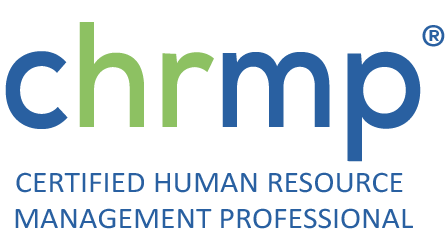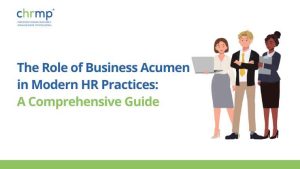Table of Contents
ToggleIntroduction: Understanding HR Reporting
Human Resources (HR) reporting, an integral part of organizational management, involves the process of gathering, analyzing, and presenting data related to various HR activities. This process aids in decision-making, helps track performance against HR goals, and ensures regulatory compliance. To illustrate, an HR analytics report might detail everything from recruitment and retention rates to training outcomes and employee satisfaction, providing a comprehensive overview of the company’s workforce.
Thank you for reading this post, don't forget to subscribe!What is HR reporting?
Simply put, it involves compiling data that helps executives and HR professionals understand and optimize their human capital. For instance, an HR business report might reveal trends in employee turnover, which can signal the need for improved engagement strategies or better benefits.
Why HR Reporting Has Become a Necessity
In today’s dynamic business environment, HR reporting is more than just an operational requirement; it is a strategic tool that enhances organizational effectiveness. With advances in HR technology, data-driven insights garnered through various HR reports for management play a crucial role in strategic planning and competitive positioning.
- Strategic Decision Making: Comprehensive human resources reports enable leaders to make informed decisions about talent management, training needs, and resource allocation.
- Regulatory Compliance: Keeping detailed HRM reports ensures that the organization adheres to employment laws and regulations, reducing legal risks.
- Performance Tracking: Report human resource management activities help in monitoring the effectiveness of HR initiatives against set benchmarks.
Types of HR Reporting
There are several types of HR reports, each serving a specific purpose and providing insights into different aspects of human resource management:
Detailed Analysis of HR Reporting Types
HR reporting serves as a foundational element in strategic human resource management, facilitating informed decision-making and effective management of human capital. Each type of HR report has a unique focus, caters to specific stakeholders, and encompasses several key components essential for comprehensive analysis. Here’s an in-depth look at each type of HR report, defining its purpose, objectives, key stakeholders, and detailed components, along with a practical example:
-
Recruitment and Staffing Reports
Purpose and Objectives: Recruitment and staffing reports aim to optimize the hiring process by evaluating the efficiency and effectiveness of different recruitment strategies. These reports help HR departments adjust their recruitment tactics to attract top talent more efficiently and cost-effectively.
Key Stakeholders: HR recruiters, department heads, and senior management are the primary users. They benefit by understanding which recruitment channels yield the best candidates at the lowest cost and shortest time.
Components:
- Time-to-Hire: Measures the duration between posting a job and filling the vacancy.
- Source Effectiveness: Evaluates which recruitment channels (e.g., job boards, social media, recruitment agencies) provide the most qualified candidates.
- Recruitment Costs: Analyzes the total cost associated with each hire.
- Candidate Quality: Assesses the performance and retention rate of hires from different sources.
- Offer Acceptance Rate: Tracks the percentage of job offers accepted by candidates.
Example: A recruitment report might collect data on the number of candidates interviewed per source, cost per interview, and cost per hire. Analysis might show that although agency hires are quicker, direct applications via the company’s career page lead to longer-term retention and lower costs, influencing future recruitment strategy adjustments.
-
Training and Development Reports
Purpose and Objectives: These reports assess the impact and effectiveness of training programs on employee performance and organizational outcomes. They guide the development of future training initiatives to enhance skills and competencies across the company.
Key Stakeholders: Training managers, HR professionals, and line managers use these reports to gauge the return on investment in training and its impact on operational performance.
Components:
- Training Attendance: Tracks participation rates in training sessions.
- Pre- and Post-Training Assessments: Measures knowledge or skills before and after training.
- Cost of Training: Calculates the total investment in training programs.
- Employee Satisfaction with Training: Gauges employee perceptions of training efficacy.
- Impact on Performance: Correlates training with changes in work output or quality.
Example: A training report could analyze pre- and post-training assessment scores to quantify learning outcomes, correlate training with performance metrics like sales volume or customer service ratings, and calculate ROI by comparing these performance boosts against the cost of training programs.
-
Turnover and Retention Reports
Purpose and Objectives: These reports focus on understanding the patterns and reasons behind employee turnover to develop strategies that enhance retention, improve employee engagement, and reduce recruitment costs.
Key Stakeholders: HR managers, team leaders, and executive management are concerned with turnover rates as they directly impact operational continuity and organizational knowledge.
Components:
- Turnover Rate by Department/Team: Identifies high-risk areas for turnover.
- Reasons for Leaving: Categorizes voluntary and involuntary exit reasons.
- Employee Tenure: Analyzes the length of service before departure.
- Cost of Turnover: Estimates the financial impact of replacing employees.
- Effect of Turnover on Team Performance: Evaluates how turnover affects remaining team members and overall productivity.
Example: A turnover report might collect exit interview data to determine common reasons for leaving, calculate the cost of turnover including lost productivity and recruitment expenses, and use data analytics to predict future turnover trends and identify preventative measures.
-
Performance Management Reports
Purpose and Objectives: Performance management reports evaluate how effectively employees achieve their job objectives and contribute to organizational goals. These insights are crucial for managing promotions, rewards, and career development.
Key Stakeholders: Supervisors, HR professionals, and senior leaders use these reports to align individual performance with the organization’s strategic objectives and to manage talent effectively.
Components:
- Goal Achievement Rates: Measures the percentage of objectives met by employees.
- Performance Ratings: Summarizes employee performance evaluations.
- Development Needs: Identifies areas where employees require additional training or support.
- Performance Trends: Tracks changes in performance over time.
- Alignment with Business Goals: Assesses how individual performances contribute to achieving business objectives.
Example: A performance management report might track quarterly performance ratings across departments, correlate these ratings with business outcomes like sales or customer satisfaction, and highlight areas needing attention for training or additional resources to boost productivity.
-
Compensation and Benefits Reports
Purpose and Objectives: Compensation and benefits reports analyze the organization’s remuneration strategies to ensure they are competitive, equitable, and aligned with industry standards. These reports help in attracting and retaining talent by providing insights into how compensation impacts employee satisfaction and turnover.
Key Stakeholders: Compensation specialists, HR managers, and senior executives are the primary audiences. They utilize these reports to make informed decisions about salary structures, bonus schemes, and benefits offerings to maintain competitiveness and fairness in the market.
Components:
- Salary Benchmarks: Compares internal salaries with industry or regional averages to ensure competitiveness.
- Benefits Utilization: Measures how employees are using offered benefits, such as health insurance or retirement plans.
- Cost of Benefits: Analyzes the company’s investment in employee benefits and its impact on overall compensation costs.
- Pay Equity: Examines salary differences across genders, ethnicities, and other demographic factors to ensure fairness.
- Link Between Compensation and Retention: Investigates how salary increases, bonuses, and benefits impact employee retention rates.
Example: A comprehensive compensation report could include data on average salaries per role within the company compared to market rates, the percentage of employees participating in health and wellness programs, and analysis of turnover rates in relation to recent changes in compensation packages. This analysis could reveal whether current compensation strategies are effective or if adjustments are needed to better meet employee needs and market standards.
-
Diversity and Inclusion Reports
Purpose and Objectives: These reports provide insights into the demographic makeup of an organization’s workforce and the effectiveness of diversity and inclusion initiatives. They are essential for fostering an inclusive workplace culture and ensuring compliance with legal and social standards regarding workplace diversity.
Key Stakeholders: Diversity officers, HR leaders, and all management levels benefit from these reports to track progress towards diversity goals, identify areas for improvement, and enhance the company’s reputation as an inclusive employer.
Components:
- Workforce Demographics: Breaks down the employee population by race, gender, age, and other demographics.
- Diversity Hiring Metrics: Tracks the diversity of new hires to assess the effectiveness of inclusive recruitment practices.
- Employee Sentiment on Inclusion: Gathers feedback through surveys on employees’ perceptions of inclusivity and belonging.
- Promotion and Development Opportunities: Analyzes access to promotions and professional development opportunities among different demographic groups.
- Impact of Diversity Programs: Evaluates the outcomes of specific diversity-related initiatives and programs.
Example: A diversity and inclusion report might compile data on the diversity of applicants versus those hired, analyze promotion rates across different demographic groups, and survey results on employee perceptions of fairness and inclusion. This data can be used to tailor diversity training programs, adjust recruitment tactics, and report on diversity metrics to stakeholders to demonstrate commitment to an inclusive work environment.
Each type of HR data reporting offers specific insights that help refine HR strategies and improve overall organizational efficiency.
Use Cases of HR Reporting
Creating detailed human resource management reports benefits all stakeholders in an organization:
- For Employees: Reports on training effectiveness, satisfaction surveys, and performance evaluations help employees understand their career progression opportunities and areas for improvement.
- For Employers: Strategic reports like workforce planning and cost analysis provide employers with critical insights for making informed business decisions.
- For HR Professionals: Regular HR reporting allows HR teams to streamline their processes, measure the impact of their policies, and improve overall workforce management.
Step-by-Step Guide to Crafting Effective HR Reports
Step 1: Define Clear Objectives
Before you start any report, you need to know what you want to achieve. Ask yourself:
- What specific questions do I need this report to answer?
- Who is the audience for this report (e.g., senior management, HR team, department heads)?
- What decisions are we aiming to support with the data from this report?
For instance, if your report is about employee turnover, your objective might be to identify the departments with the highest turnover rates and understand the underlying causes.
Step 2: Gather Accurate Data
The quality of your HR report relies heavily on the quality of your data. To ensure accuracy:
- Identify the sources of your data. This could be HR management systems, employee surveys, or performance management tools.
- Collect data over a relevant period to capture trends and patterns.
- Make sure to clean the data to remove any errors or inconsistencies, such as duplicate entries or incorrect employee information.
For example, if you’re preparing a recruitment report, you’ll want data on the number of candidates, sources of hire, time to fill positions, and cost per hire.
Step 3: Use the Right Tools
Using appropriate HR reporting tools can simplify your data analysis and make the report visually appealing and easy to understand. Consider:
- Spreadsheet software like Microsoft Excel for basic data analysis and visualization.
- Specialized HR software like Zoho People or BambooHR, which offer built-in analytics and reporting features.
- Learning basic data visualization principles to present data in charts, graphs, and tables effectively.
For creating a performance management report, tools that can show performance trends over time or compare performance across different teams or departments would be particularly useful.
Step 4: Customize Reports for Your Audience
Tailor your report’s content and presentation to suit the needs and understanding of its intended audience:
- Decide on the level of detail required. Executives might prefer a summary with key metrics and trends, while team leaders might need detailed reports on their team’s specific performance.
- Highlight the most important findings upfront. Use summaries or bullet points to draw attention to key data.
- Include recommendations based on the data to guide decision-making.
For example, in a benefits utilization report, highlight which benefits are most and least popular and suggest adjustments that could enhance employee satisfaction and retention.
Step 5: Review and Revise
An HR report is not just a document—it’s a tool for continuous improvement:
- After distributing the report, gather feedback on its usefulness and clarity.
- Regularly update the report with new data to maintain its relevance.
- Adjust the format and content based on the changing needs of the organization and the feedback received.
Imagine you’ve issued a quarterly diversity report. Based on feedback, you might find that additional demographic breakdowns by department or seniority level could provide more insights and should be included in future reports.
By following these detailed steps, you can develop HR reports that are not only informative and accurate but also actionable and tailored to the specific needs of your audience. This approach ensures that your reports contribute positively to strategic decision-making and operational improvements within the organization.
Open-Access Software for HR Reporting
Several open-access software tools can facilitate the creation of insightful HR reports:
- Zoho People: Offers a range of HR reporting features, allowing for customization and detailed analytics.
- OrangeHRM: Provides robust reporting capabilities, particularly useful for small to medium-sized enterprises.
- HR.my: Known for its free HR management features, including employee data management and reporting tools.
- Power BI: While not exclusively an HR tool, Power BI by Microsoft offers powerful data visualization and reporting capabilities that can be leveraged for HR reporting. It allows HR professionals to create interactive reports and dashboards that provide deeper insights into workforce data. Its ability to integrate data from multiple sources and perform advanced analytics makes Power BI a valuable addition to the HR toolkit.
These tools make it easier for HR professionals to generate detailed reports without substantial IT involvement, improving efficiency and responsiveness.
Conclusion
HR reporting is indispensable in today’s data-driven age, providing crucial insights that help shape strategic decision-making and enhance operational efficiencies. By utilizing the right tools and approaches in creating detailed HR reports and analytics, organizations can significantly improve their HR functions, contributing to overall business success.
We encourage you to share your experiences or questions about HR reporting in the comments below. Whether it’s challenges you’ve faced or successes you’ve celebrated, your insights can help enrich the discussion and provide valuable perspectives to peers in the field.





